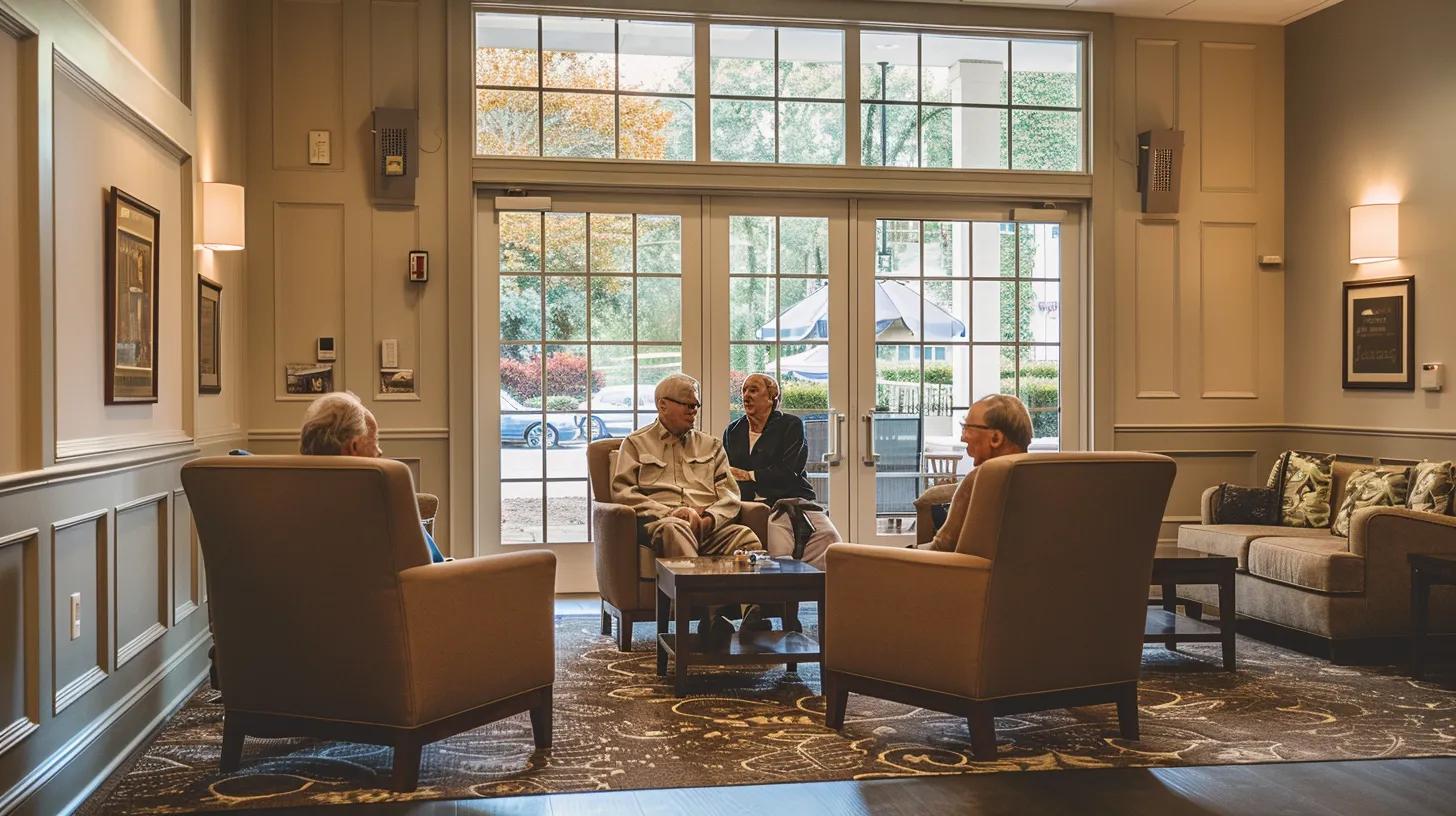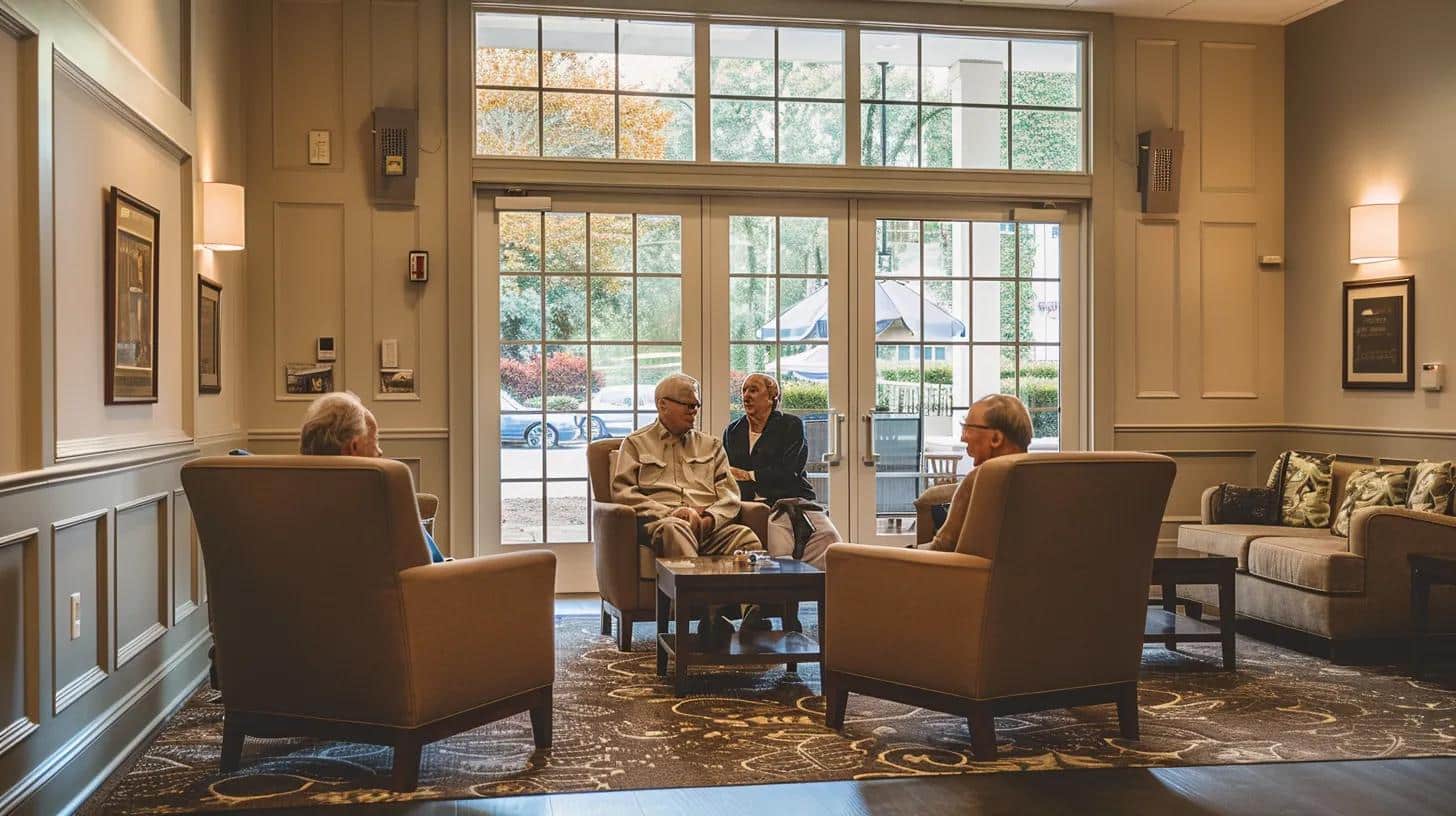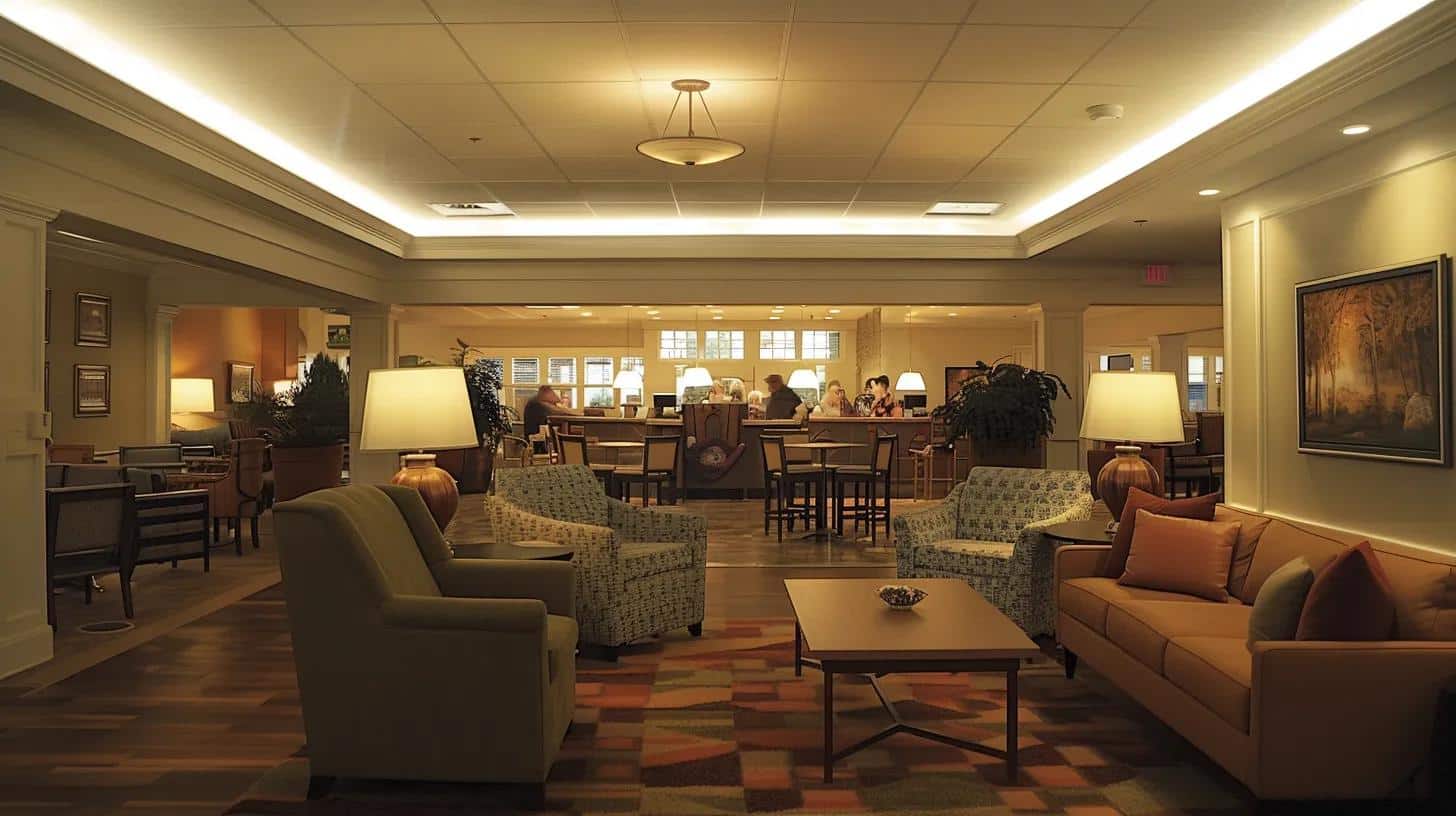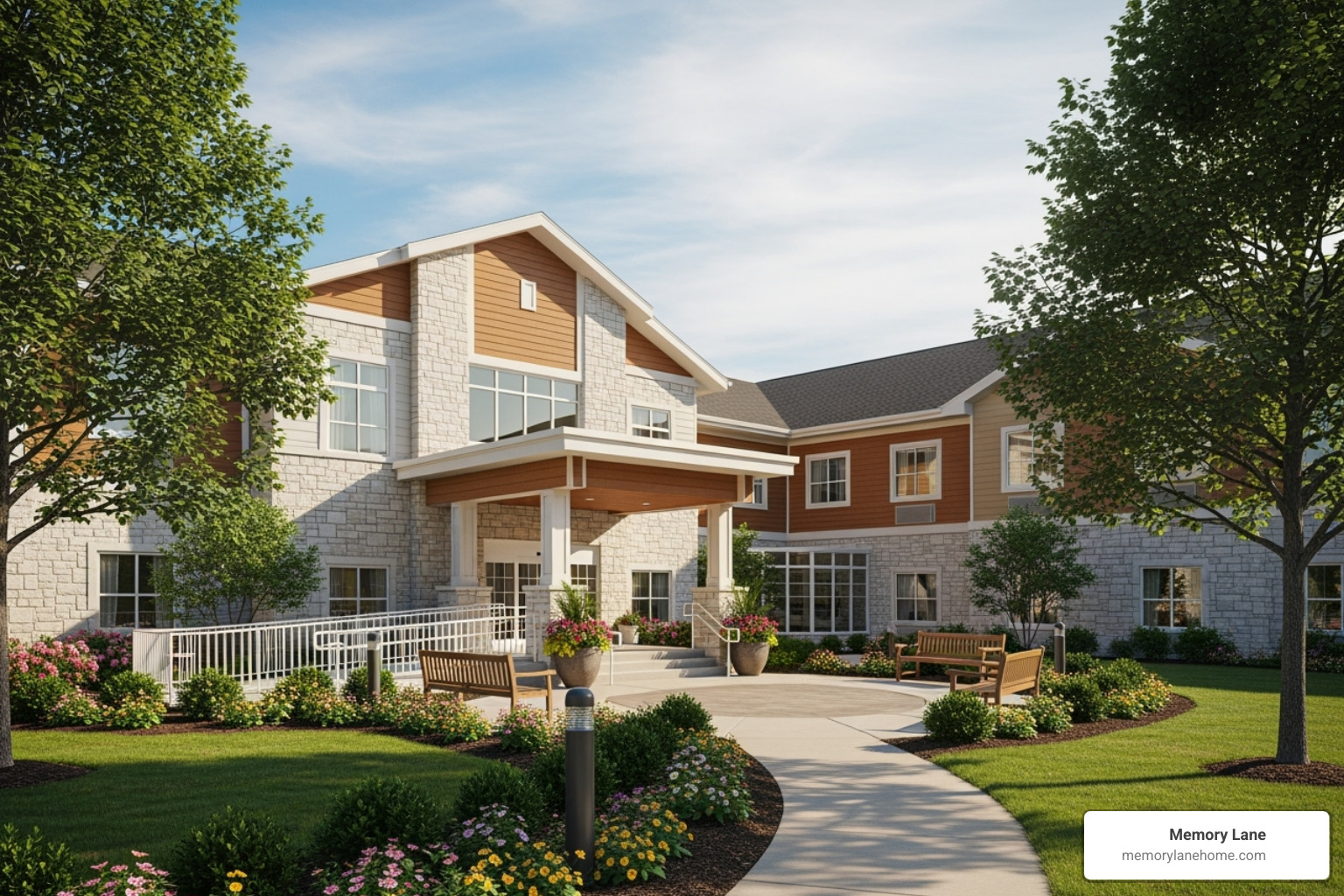Navigate elder care Ann Arbor options. Find types of care, payment, and local resources for your loved one's needs.

How Assisted Living for Seniors Supports Independence
How Assisted Living for Seniors Supports Independence

Assisted Living for Seniors
Assisted living for seniors provides a unique residential option for older adults who desire a balance of independence and support. This model addresses common aging concerns such as managing daily tasks, maintaining social connections, and ensuring medical safety. Families often struggle to select a community that offers a home-like environment along with professional assistance for personal care and health needs. This article explores assisted living by defining its core aspects, outlining services and costs, and offering guidance on selecting a facility, all while emphasizing quality of life, independence, and safety.
Assisted Living for Seniors Guide: Table of ContentsTable Of Contents:
- Assisted Living for Seniors
- Defining Assisted Living for Seniors
- Key Services Offered in Assisted Living for Seniors
- Evaluating the Costs of Assisted Living for Seniors
- Identifying When Assisted Living Is the Right Choice for Seniors
- Benefits of Choosing Assisted Living for Seniors
- Selecting the Best Assisted Living Facility for Seniors
- Daily Life and Activities in Assisted Living for Seniors
- The Transition Process to Assisted Living for Seniors
- Legal and Regulatory Aspects of Assisted Living for Seniors
- Frequently Asked Questions
- Final Thoughts
Defining Assisted Living for Seniors
Assisted living is a residential option where seniors receive help with day-to-day activities while enjoying a level of autonomy. It fills the gap between independent living and nursing home care by offering personalized support with bathing, dressing, medication management, and meals. Key characteristics include a home-like setting, tailored support, and community engagement. Facilities provide services such as housekeeping and transportation to help seniors who still manage many tasks on their own.
Understanding Core Services in Senior Assisted Living
Communities in assisted living focus on comprehensive support. Services include personal care (help with bathing and grooming), aid with medication, and assistance with routine tasks like mobility and meal preparation. Many facilities also offer daily exercise sessions, wellness checks, and scheduled social activities to maintain both physical fitness and emotional well-being.
Differentiating Assisted Living From Nursing Homes
Assisted living is distinct from nursing home care primarily due to the intensity of services. While nursing homes provide round-the-clock clinical care for medically fragile individuals, assisted living supports those who need occasional help without constant medical supervision. This mix of independence and available support makes assisted living an appealing option for many seniors.
Typical Resident Profile for Assisted Living
Residents are generally older adults who can perform most daily activities but benefit from occasional support. They value personalized assistance without sacrificing their independence. Frequently, these individuals have mild to moderate physical or cognitive limitations and appreciate the community and social engagement offered in assisted living settings.
The Philosophy Behind Assisted Living Communities
The underlying philosophy is to empower seniors to live safely and comfortably while preserving dignity and individuality. Caregivers are trained to address both physical and emotional needs, fostering a nurturing environment. This approach enhances quality of life with personalized care plans and a variety of recreational activities that promote social engagement within a supportive community.
Key Services Offered in Assisted Living for Seniors

Assisted living facilities aim to support residents’ overall well-being by offering a range of services, from basic personal hygiene to nutritional and recreational support. This integrated approach helps seniors maintain independence while managing the challenges of aging.
Daily Personal Care Assistance for Older Adults
Personal care services include assistance with bathing, grooming, dressing, and mobility. Professional caregivers offer help only when needed, preserving residents’ dignity and encouraging independence. This structured assistance reduces the risk of accidents and infections and promotes overall well-being.
Medication Management and Health Monitoring
Effective medication management is vital in assisted living. Staff administer medications, monitor vital signs, and ensure scheduled doctor visits. Regular health monitoring helps manage chronic conditions and spot early signs of health issues by tracking nutritional status, physical mobility, and mental cues.
Meal Preparation and Dining Experiences
Nutrition is a key aspect of senior health. Facilities provide meal preparation services designed to meet dietary needs and personal preferences. Dining is often a communal experience that promotes both social interaction and balanced diets planned by nutrition experts, accommodating dietary restrictions and special conditions.
Housekeeping and Maintenance Services
Housekeeping services ensure that living environments remain clean, comfortable, and safe. Regular cleaning, laundry, and minor maintenance help relieve seniors of household chores, allowing them to focus on social and personal activities that contribute to physical and mental stability.
Arranging Transportation for Senior Residents
Assisted living communities often offer transportation services that help maintain independence. Scheduled or on-demand transport assists residents with medical appointments, shopping, and social outings—especially important for those who no longer drive, ensuring they have access to essential services and community events.
Evaluating the Costs of Assisted Living for Seniors
Cost evaluation is critical when considering assisted living. Expenses vary by location, care level, and additional services provided. Understanding monthly fees, payment options, and factors influencing costs helps families make informed financial decisions regarding care.
Breaking Down Monthly Fees for Senior Assisted Living
Monthly fees generally cover personal care, utilities, meals, and housekeeping. Pricing structures vary widely; some facilities use tiered pricing based on the level of needed care, allowing residents to only pay for essential services. Detailed fee structures often list basic charges along with optional services, making transparency key during decision-making.
Exploring Payment Options and Financial Aid
Many payment options are available for assisted living. Options include private pay, long-term care insurance, Medicaid, and veterans’ benefits. Some facilities even offer sliding scale fees or payment plans to accommodate varying financial situations. Financial planning and counseling can help families navigate these options and prepare for long-term care expenses.
Comparing Costs With in-Home Care and Other Senior Living Options
When evaluating senior care, it is useful to compare
with alternatives such as in-home care, independent living, and nursing homes. In-home care often charges by the hour, while independent living tends to focus on amenities over personal care. Assisted living offers a balanced approach, typically combining a community environment with professional support at a cost that reflects both services and care levels.
Understanding What Influences Price Variations
Several factors affect the cost of assisted living, including regional cost of living, facility reputation, size and quality of accommodations, and service range. Facilities in metropolitan areas or high cost-of-living regions may charge more. It’s important for families to assess which services are essential and which are optional, considering factors like personalized care and specialized medical support.
Planning for Future Cost Increases in Assisted Care
Seniors and families should plan for potential increases in assisted living costs due to inflation, rising healthcare prices, and enhanced service demands. Some facilities offer fixed-rate contracts for a limited period or provide financial counseling to help manage long-term budgeting. Proactive financial planning can prevent unexpected stress as costs evolve over time.
Identifying When Assisted Living Is the Right Choice for Seniors

Deciding when to move to assisted living is a critical process that involves assessing the evolving needs of the senior. Recognizing signs that signal a need for additional support and involving family in the decision-making process are essential.
Recognizing Signs a Senior Needs Assisted Living Support
Early warning signs include difficulties managing daily tasks, frequent falls, medication non-compliance, and social isolation. Increased forgetfulness and challenges with personal care or household chores can indicate that a more supportive environment may enhance safety and quality of life.
Assessing a Senior’s Needs for Daily Assistance
Evaluating both physical and cognitive capacities helps determine the appropriate level of care. This may involve assessing the ability to perform personal hygiene, manage meals, maintain safe mobility, and communicate effectively. Professional assessments can provide valuable insights into the degree of support required, ensuring a timely and appropriate transition.
Involving Family in the Decision-Making Process
Family members play an important role in the transition to
. Open discussions about needs, preferences, and available options not only provide emotional support but also help generate a comprehensive understanding of the best care choices available. Involving healthcare professionals further ensures that the decision is well-informed.
Consulting Healthcare Professionals for Guidance
Primary care physicians and geriatric specialists can offer crucial insights when assessing whether assisted living is necessary. Their evaluations of medical history, current health status, and future needs support the decision on the appropriate level of care and help match seniors with facilities that best suit their individual profiles.
Benefits of Choosing Assisted Living for Seniors
Assisted living offers many benefits that significantly enhance quality of life for seniors. These advantages not only provide safety and comprehensive support but also foster emotional well-being and social engagement, easing concerns for families.
Promoting Safety and Security for Older Adults
Assisted living facilities are designed to reduce accidents and handle emergencies effectively. With features such as emergency response systems, safety checks, and well-trained staff, residents benefit from a secure environment. Physical modifications like handrails and non-slip surfaces further contribute to reducing injury risks.
Enhancing Social Engagement and Community Life
Beyond physical care, assisted living creates opportunities for meaningful social interactions. Group activities, hobby clubs, and cultural events help residents forge friendships and reduce feelings of isolation. Regular community outings and planned social events contribute to mental stimulation and overall happiness.
Access to 24/7 Support and Emergency Response
Continuous on-site support provides residents round-the-clock care. With staff available to address emergencies or routine needs at any time, families gain peace of mind knowing their loved ones are monitored closely. This accessibility reduces risks and ensures timely intervention in case of health issues.
Maintaining Independence With Available Assistance
While offering essential help, assisted living encourages residents to retain as much independence as possible. Personalized care plans allow seniors to decide on their daily routines and preferences, thereby maintaining self-worth and fostering a positive outlook on aging.
Peace of Mind for Seniors and Their Families
For many families, the greatest benefit of assisted living is the reassurance that comes with comprehensive care.
combine professional medical support with social and personal care, ensuring that residents remain safe and engaged while relieving families of constant caregiving stresses.
Selecting the Best Assisted Living Facility for Seniors

Choosing the right facility involves careful research and several key considerations, including the specific needs of the senior, safety standards, and overall quality of life offered by the community.
Researching Local Assisted Living Communities
Families should begin by exploring local assisted living options. Comparing facilities based on services, amenities, reputation, and online reviews can reveal important differences. Firsthand feedback from current residents and their families often provides valuable insights into the quality and environment of a community.
Questions to Ask During Facility Tours
During tours, families should ask detailed questions such as: • What is the caregiver-to-resident ratio? • How are medical emergencies handled? • What social activities and dining options are available? • How flexible are the care plans regarding individual needs?
These questions help assess whether the facility can meet the senior’s specific requirements effectively.
Evaluating Staff Qualifications and Resident Ratios
The quality of care often depends on the experience and training of the staff. A low caregiver-to-resident ratio can indicate more personalized attention. Observing interactions between staff and residents during visits helps reveal whether the facility maintains a compassionate and professional environment.
Reviewing Licensing and Inspection Reports
It is important to review licensing documents and state inspection reports to ensure that the facility meets regulatory standards. A good reputation with minimal violations or deficiencies typically reflects a higher standard of care.
Trusting Your Instincts and Resident Feedback
In addition to formal data, personal impressions and feedback from current residents play a key role. Positive comments and observations about the community atmosphere can reassure families that the facility is the right choice for their loved one.
Daily Life and Activities in Assisted Living for Seniors
A well-structured daily routine in assisted living helps maintain a healthy balance of care, activity, and social engagement. Facilities design schedules to support both physical health and mental well-being.
Sample Daily Schedules in a Senior Assisted Living Setting
Typically, a day starts with personal care routines followed by a nutritious breakfast. Mornings might feature exercise classes or wellness check-ups, while afternoons include meals, social events, or leisure time. Evenings are often relaxed with communal dinners and quiet activities that promote reflection and rest.
Types of Social and Recreational Programs Offered
Assisted living communities offer a range of social and recreational programs tailored to resident interests. Group outings, music and art therapy, and themed events help reduce isolation and stimulate cognitive functions. Such engagement supports both mental and physical health while maintaining a strong sense of community.
Opportunities for Continued Learning and Hobbies
Many centers encourage lifelong learning through classes on topics like art, history, or technology. Organized hobbies such as gardening, cooking, and craft sessions allow residents to pursue interests, boost cognitive functions, and stimulate creative expression.
Fostering Connections and Friendships Among Residents
Spacious communal areas and organized social events are designed to help residents connect meaningfully. Regular gatherings, movie nights, and group excursions foster lasting friendships and provide mutual emotional support that enhances overall quality of life.
Ensuring Resident Well-Being and Quality of Life
Overall well-being is achieved through personalized care, engaging routines, and balanced nutrition. Many communities incorporate wellness programs, exercise sessions, and regular feedback to continuously adapt activities that meet the evolving needs of their residents.
The Transition Process to Assisted Living for Seniors

Moving to assisted living is a significant transition involving both emotional and practical adjustments. A well-planned transition can minimize anxiety and facilitate a smoother adaptation to the new environment.
Preparing for the Move to a Senior Assisted Living Community
Successful transitions start with thorough research and planning. Families should gather essential documents, downsize belongings, and visit several facilities to find the best fit. Discussing the move openly with the senior can ease fears and build excitement for a renewed lifestyle.
Tips for Downsizing and Personalizing a New Space
Downsizing involves sorting belongings and deciding which cherished items to bring along. Personalizing the new living space with familiar photos, décor, and mementos creates a comforting, homelike environment that eases the adjustment process.
Adjusting to a New Routine and Environment
New residents may initially feel disoriented, but structured daily schedules and supportive staff help them adapt. Orientation sessions and one-on-one meetings with care coordinators can improve familiarity with the facility’s operations and promote a smoother transition.
Support Systems for New Residents and Families
Beyond resident support, many facilities offer resources to assist families during the transition. Peer mentorship programs and regular family meetings build trust and ensure that all concerns are addressed, facilitating an environment of collective support.
Making the New Assisted Living Residence Feel Like Home
A successful transition ultimately makes the assisted living facility feel like home. Personal touches, community-building activities, and a welcoming atmosphere help residents integrate quickly, thereby reinforcing both independence and communal living.
Legal and Regulatory Aspects of Assisted Living for Seniors
The legal framework governing assisted living ensures that residents’ rights are protected and that facilities adhere to quality care standards. Understanding these aspects is essential for families making informed decisions.
Understanding Residency Agreements and Contracts
Residency agreements are binding contracts that detail the services offered, associated fees, and protocols for resolution of disputes. Reviewing these agreements carefully helps families understand what services are covered and avoid unexpected costs, ensuring transparency and clear expectations.
Resident Rights in Assisted Living Facilities
Seniors are entitled to rights that protect their dignity, privacy, and autonomy. These rights typically include choices regarding daily routines, confidentiality in personal spaces, and respectful care. Ensuring that facilities uphold these rights is crucial for evaluating care quality.
State Regulations and Oversight for Senior Care
Assisted living facilities operate under state and local regulations that enforce high-quality standards. Regular inspections and licensing ensure compliance, and long-term care ombudsman programs offer additional support by addressing concerns or abuses, thereby adding an extra layer of confidence when choosing a facility.
Addressing Concerns and Resolving Issues
Facilities are required to have procedures for handling complaints and resolving issues, whether they involve service quality or billing discrepancies. Open communication and established mediation processes help ensure that any problems are addressed promptly.
The Role of Long-Term Care Ombudsman Programs
Ombudsman programs provide confidential avenues for residents and families to report concerns without fear of retribution. These programs play an important role in ensuring accountability and protecting resident rights, thereby enhancing overall trust in the facility.
Frequently Asked Questions
Q: What exactly is assisted living for seniors? A: Assisted living is a residential option that provides personalized support for daily activities while allowing seniors to maintain independence. It includes services such as personal care, medication management, meal preparation, and social activities that enhance both physical and mental well-being.
Q: How do I know if assisted living is the right choice for my senior loved one? A: Look for signs like difficulty managing daily activities, frequent falls, or cognitive decline. Family discussions and professional consultations are essential to assess the senior’s needs and determine if assisted living will improve their quality of life.
Q: What costs are associated with assisted living, and how can they be managed? A: Costs typically cover personal care, meals, housekeeping, and utilities, with fees varying based on location and care level. Families can use private pay, long-term care insurance, Medicaid, or veterans’ benefits, and it is important to review fee structures and payment options carefully.
Q: How can I evaluate an assisted living facility? A: Research local communities, review licensing and inspection reports, and ask specific questions during tours. Key factors include the caregiver-to-resident ratio, staff qualifications, and resident feedback, combined with personal visits to assess the facility’s environment.
Q: What legal protections do residents have in assisted living facilities? A: Residents are guaranteed rights such as privacy, autonomy, and respectful treatment. Residency agreements, state laws, and ombudsman programs provide assurance and help resolve any disputes that arise.
Q: Can assisted living accommodate varying levels of care as a senior’s needs change? A: Yes, many assisted living facilities offer flexible care plans that can be adjusted as needs evolve, including more intensive personal care or medical monitoring as required.
Q: How is meal planning handled in assisted living communities? A: Nutrition experts manage meal planning by considering residents’ dietary restrictions, health conditions, and personal preferences. Meals are typically prepared on-site and served in a communal setting to encourage socialization while meeting nutritional needs.
Final Thoughts
Assisted living for seniors offers a balanced approach that combines independent living with personalized care and comprehensive support services. With a focus on safety, social engagement, and healthy living, assisted living facilities not only address everyday needs but also enhance overall quality of life. Families can feel confident in their decision when selecting a facility that offers the right blend of support and independence, ensuring that seniors enjoy a dignified, fulfilling life.


